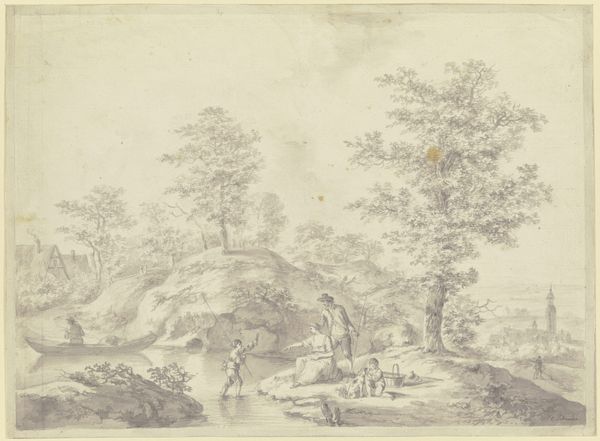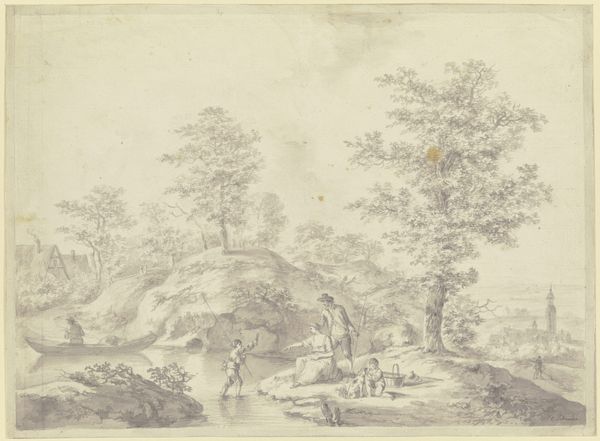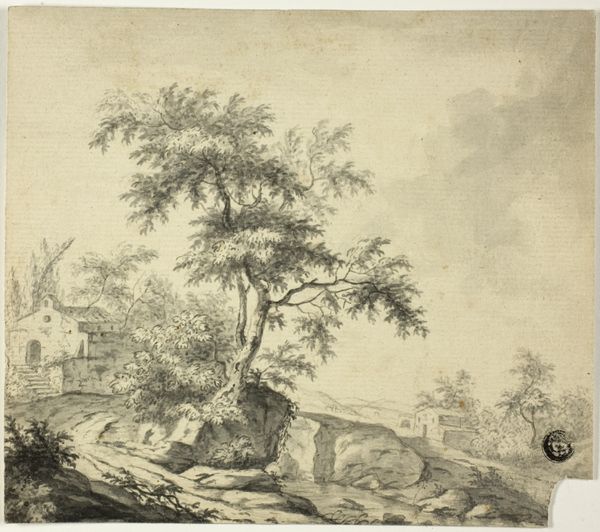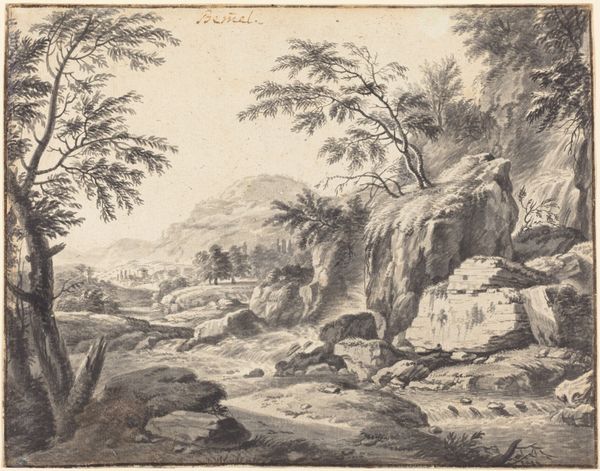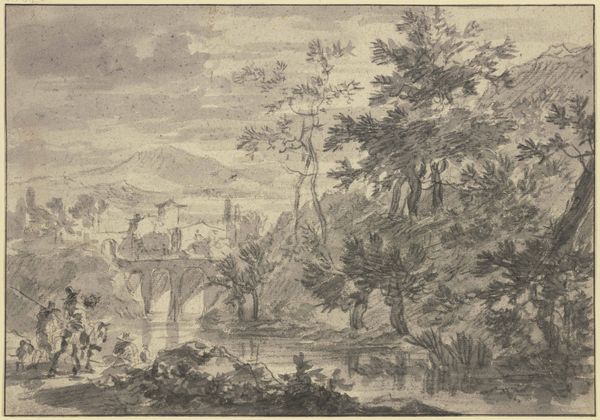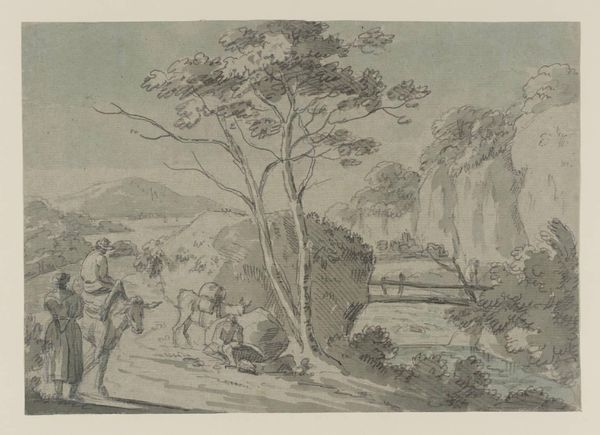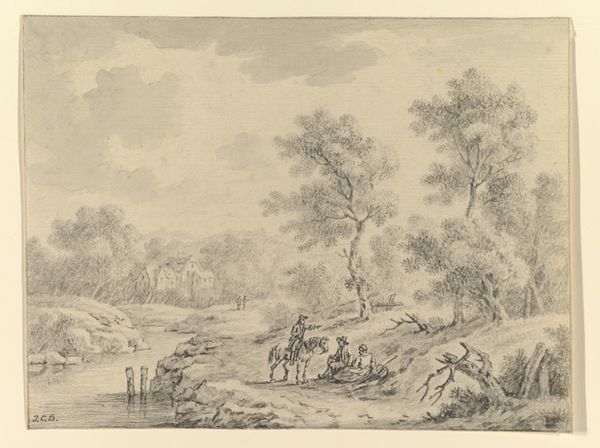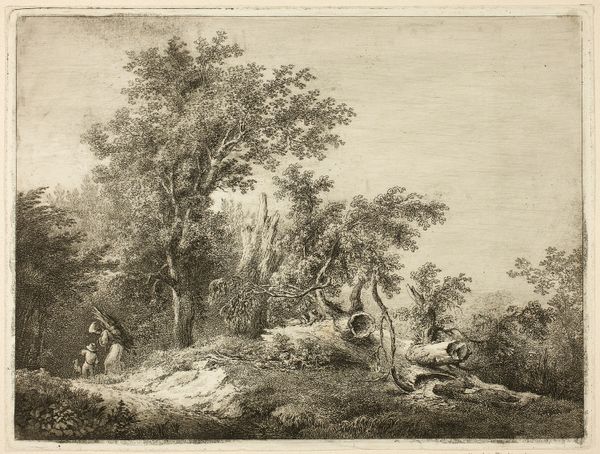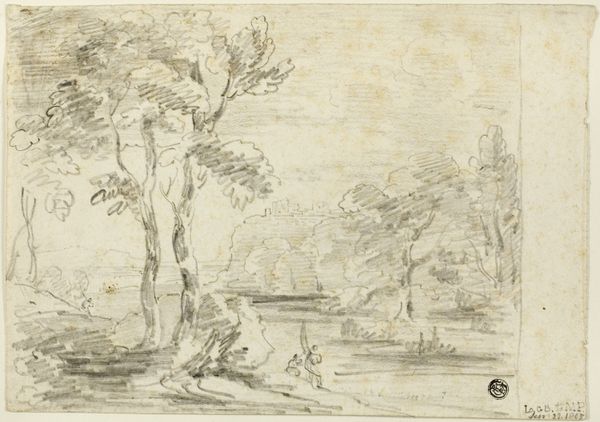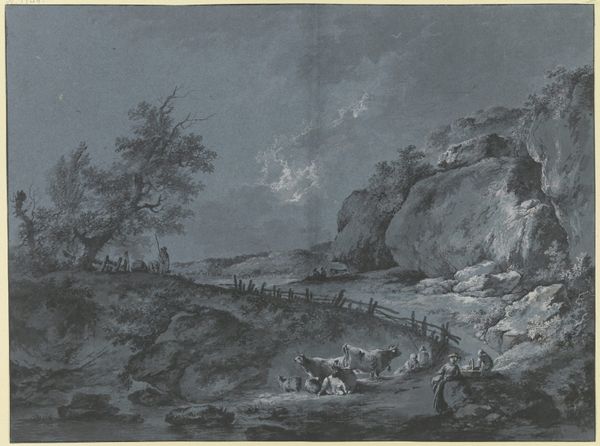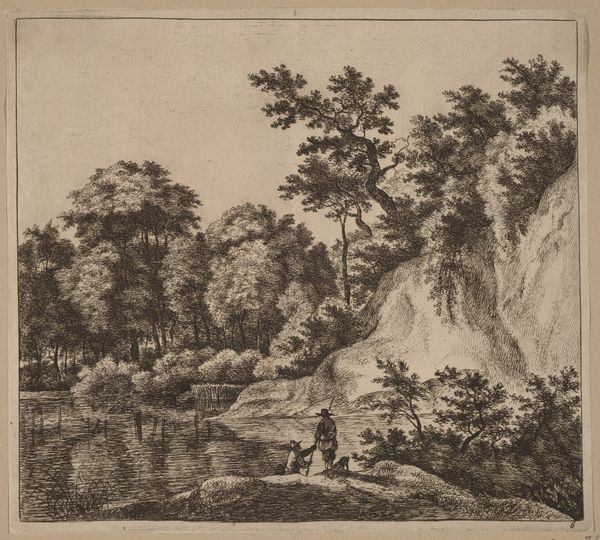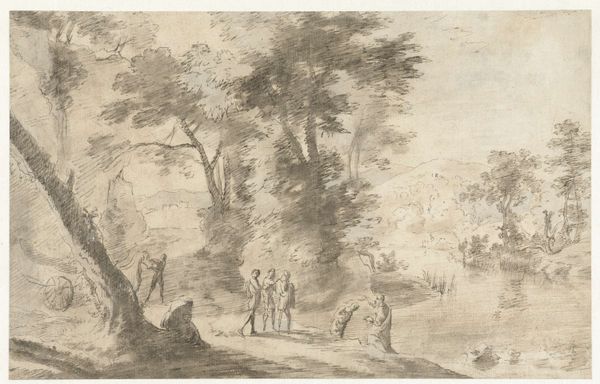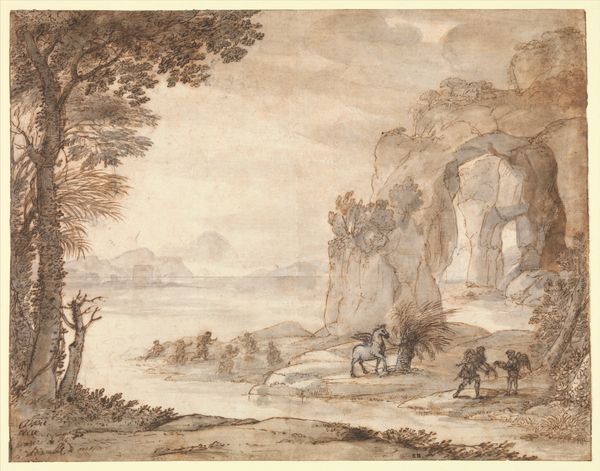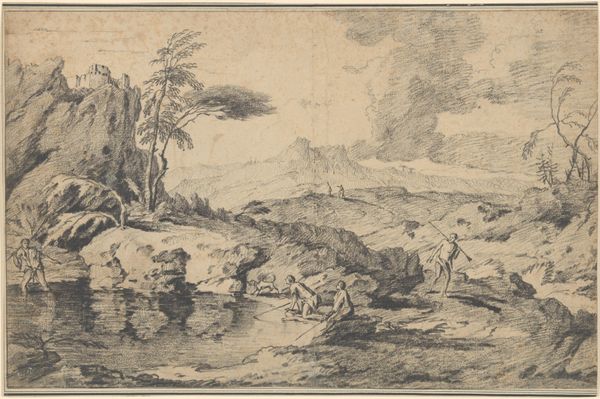
drawing, print, paper, ink
#
drawing
#
baroque
#
dutch-golden-age
# print
#
landscape
#
paper
#
ink
Dimensions: sheet: 7 x 9 5/8 in. (17.8 x 24.4 cm)
Copyright: Public Domain
Editor: Here we have Roelant Roghman's "Landscape," created sometime between 1640 and 1692. It's an ink drawing on paper. I'm immediately drawn to how this seemingly simple scene is so carefully constructed. It almost feels stage-like. How do you see this work? Curator: Well, focusing on materiality, we see ink – a relatively inexpensive material – used to depict what appears to be a specific locale transformed into a generalized, even idealized, landscape. Roghman, using ink on paper, participates in a visual culture grappling with notions of land ownership and access. This piece, as a print, could have been easily circulated. Does its reproduction complicate the original context for you? Editor: Absolutely! Thinking about it as a print that could be distributed, it shifts from being a depiction of a particular place to almost a commodity. It democratizes the image, but does that dilute its value? Curator: Precisely! It invites questions about the artist's labor. Was Roghman aiming to capture the truth of a location, or was he, through the readily available and repeatable medium of ink, constructing a desirable, perhaps even marketable, vision of the Dutch countryside? Think of the economic factors inherent in producing such landscapes. Consider the relationship between labor, material, and market forces shaping artistic output. Editor: That's fascinating. I was so focused on the scene itself, but considering the production and consumption of this image changes my understanding completely. Now it speaks to me more about the Netherlands' relationship with its land as a resource. Curator: Indeed. The accessibility and affordability of the materials themselves – ink and paper – combined with the reproductive capacity of printmaking, played a key role in shaping both the creation and reception of landscape art during the Dutch Golden Age. We are invited to examine the work's physical existence as crucial to understanding its cultural role. Editor: This has completely opened my eyes to thinking about art beyond just what’s represented, to considering how and why it was made! Thanks. Curator: My pleasure! It’s the convergence of those elements – subject matter, production methods, and consumption – that brings real depth to our understanding.
Comments
No comments
Be the first to comment and join the conversation on the ultimate creative platform.
